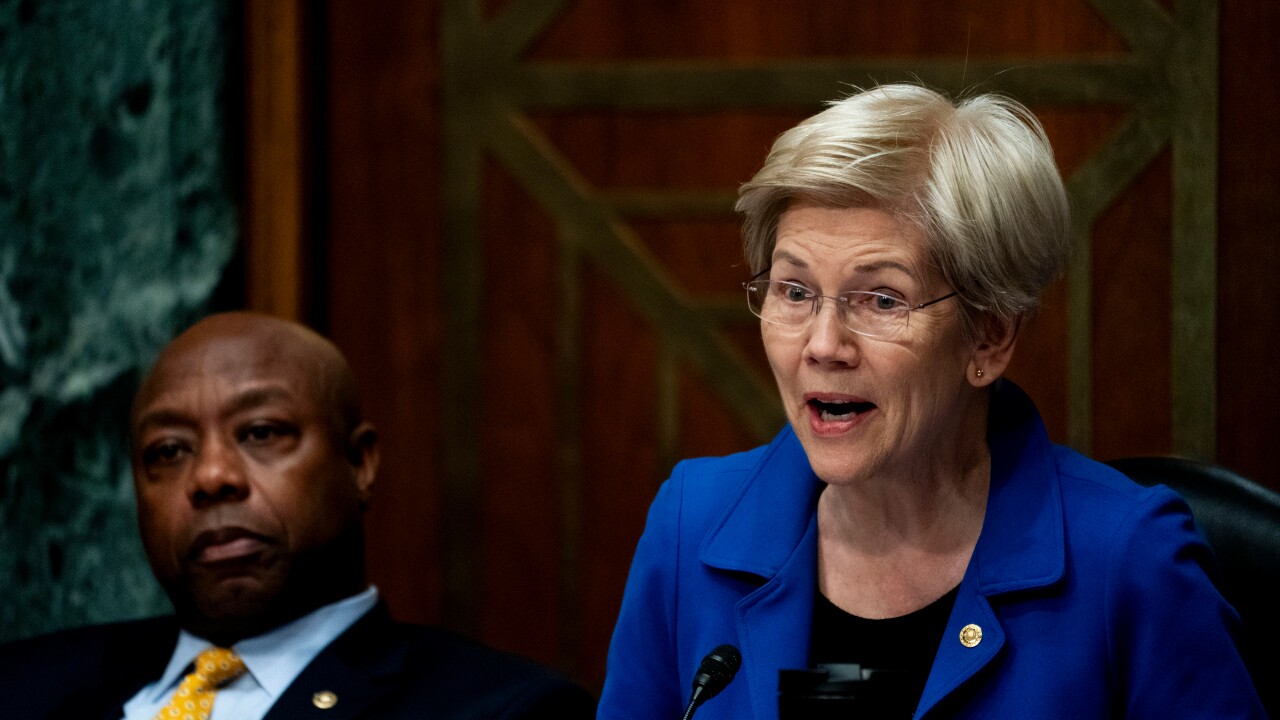-
A bipartisan bill to reform the mortgage finance system being crafted in the Senate has already drawn praise from a variety of stakeholders, but the effort is almost certain to meet strong resistance from House Republicans.
June 12 -
After years of housing finance reform efforts languishing in Congress, a draft bill by Sens. Bob Corker, R-Tenn. and Mark Warner, D-Va., appears poised to become the catalyst for finally moving ahead on a way to overhaul Fannie Mae and Freddie Mac.
June 7 -
A bipartisan group of senators led by Sen. Bob Corker, R-Tenn., is drafting legislation designed to reform the housing finance system, including a plan to wind down the government-sponsored enterprises.
May 24
WASHINGTON A prominent group of policymakers from across the political spectrum has unveiled a detailed proposal to reform the mortgage finance system that includes many common elements found in pending Senate legislation.
The bipartisan proposal, "A Pragmatic Plan for Housing Finance Reform," would eliminate Fannie Mae and Freddie Mac and put private mortgage insurers in a first-loss position. It would also establish a new regulator, the Federal Mortgage Insurance Corporation, designed after the Federal Deposit Insurance Corporation, to regulate the mortgage-backed securities market.
The structure of the system is very similar to a bill being crafted by Sens. Bob Corker, R-Tenn., and Mark Warner, D-Va., according to a discussion draft of the legislation that surfaced earlier this month. The policymakers noted that they've shared their thoughts with many on Capitol Hill and expect that comparable ideas will continue to be discussed.
"In many ways what this paper reflects is ideas that are widely shared with many others. In some ways it is almost like a narrative that could be read alongside many provisions of many proposals, although it is not identical to any one other proposal that may emerge," said Sarah Wartell, president of the Urban Institute, and one of the report's authors, on a conference call with reporters.
Wartell devised the plan with Phillip Swagel, a senior fellow at the Milken Institute; Ellen Seidman, a senior fellow at the Urban Institute; and Mark Zandi, chief economist of Moody's Analytics.
"There are elements in common with the [Bipartisan Policy Center's] plan, there are elements in common with proposals that Mark and Phil and I and Ellen have all worked on in the past, there are elements in common with pieces of legislation that are being drafted on the Hill, and I think it has a lot of pieces around which there is an emerging consensus," said Wartell, a former Federal Housing Administration official during the Clinton administration.
The proposal sidesteps some of the specific concerns that will have to be fleshed out in any successful bill, including how much capital those in the first loss position must hold. The discussion draft of the Corker-Warner bill, for example, notes that the first loss position should include "not less than 10% of the principal of" a covered security.
"We all recognize that's a key parameter that will ultimately be negotiated by lawmakers," said Swagel in an interview.
The report's authors underscored that they also left some key details to regulators to sort out on the ground, as the new system is being built.
"We very intentionally established core parameters that are very important for Congress and policymakers to establish," Wartell said on the call. "But then we do cede a significant amount of implementation authority to the FMIC precisely because if we try too hard to architect the transaction in legislation, then we will inevitably find that we built a structure that doesn't last that the markets will evolve or there will be innovation or there will be different facts we'll find."
But the paper does provide greater detail on what is almost sure to emerge as a core element of any successful housing plan the design of an affordable housing program in the absence of the government-sponsored enterprises. The proposal outlines the work of a "market access fund" that would provide explicit credit enhancements and direct subsidies through four separate funds that would offer credit supports, help non-profit housing developers and others attract more private capital and grow their programs, provide block grants to states to support affordable rental options and conduct research.
"I think we all felt like there's a common understanding that there would be this affordable housing fund, and it seemed to us that the specifics of how it would be used have been missing," Swagel said.
The plan also provides some details for what a transition to a new system might look like, including how to wind down the GSEs, establish a common securitization platform and begin attracting private capital back into the market.
"The initial steps are the same for everyone including someone who wants to end up at a fully private system," said Swagel, a former Treasury Department official in the Bush administration. "To do that you first have to bring in private capital if you want to go to 100%, you have to start from 0% to 1% to 2% to 3% and keep going. One thing that's noteworthy to me is that the transition steps are the same for any plan, so even if there's disagreement on a final outcome, perhaps there's more consensus on the transition."
Still, it's clear that significant hurdles remain for any proposal, despite the appearance of consensus around some core elements. Many House Republicans remain opposed to any government involvement in the market going forward, which could serve as a roadblock for proposals like the Corker-Warner bill or this latest effort by policymakers.
Swagel noted that while he would ideally prefer a fully private system as well, he's come to believe that the approach outlined in the joint plan is "the best feasible alternative."
"The world we're in will have government intervention if housing gets into a crisis, and there will be a crisis that's just the nature of financial markets," he said. "Future policymakers will feel obligated to intervene, so that's what leads me to a secondary government guarantee, because I think the alternative is not a fully private system, but an implicit guarantee. I understand when people say, 'No, no, I want a fully private system,' because I too want a fully private system. I just don't think it's possible to achieve that."





